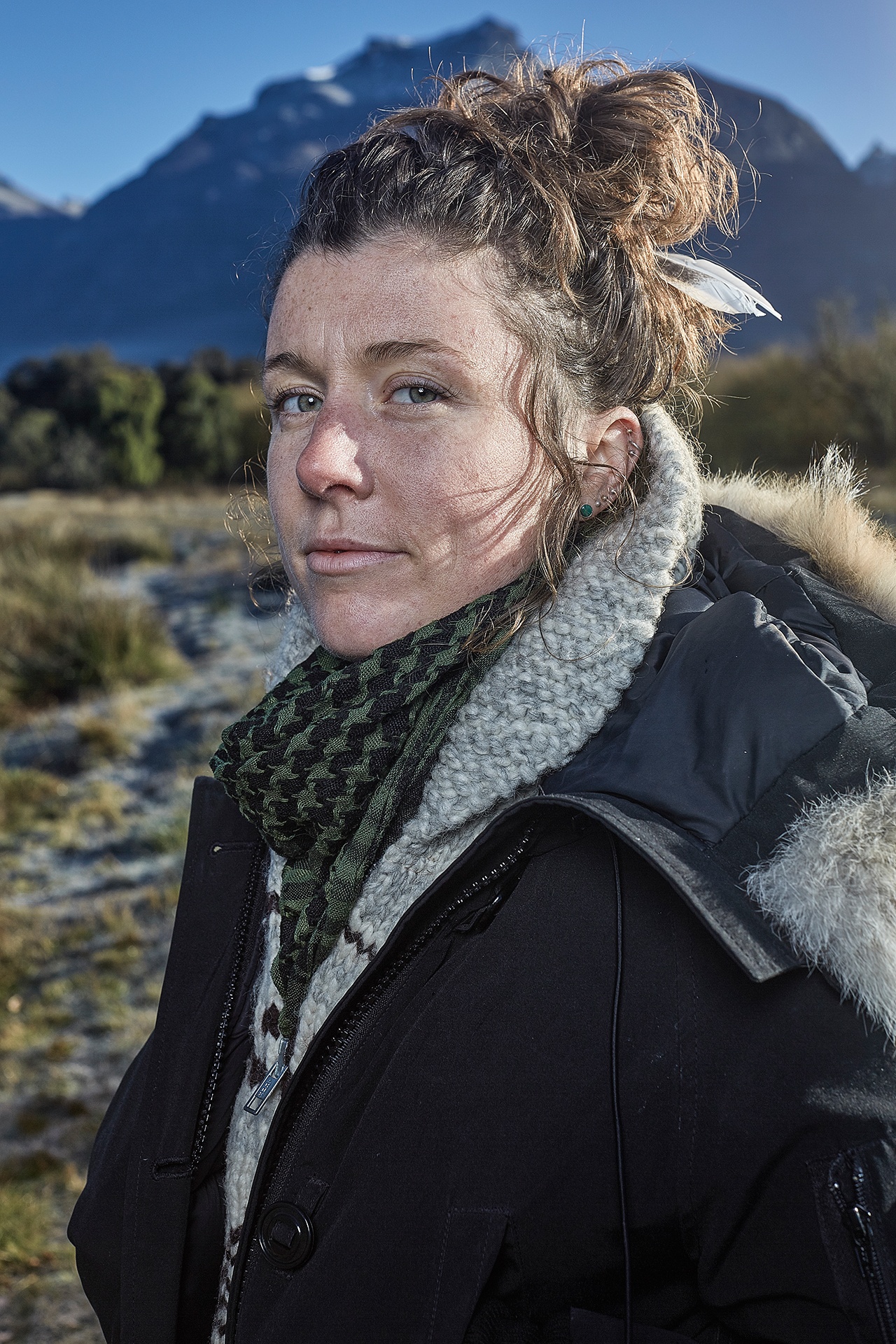Lopez native Callie Blue Heron North tackled the untamed wild of Patagonia, Argentina for History Channel’s survivalist television show “Alone.” The series’ season premiere will air on Thursday, Dec. 8.
“I had this overwhelming intuitive feeling like ‘I’m going to do that,’” said North, who owns Pachamama Apothecary in the Lopez Village.
Now in its third season, the show features participants who enter the wilderness carrying only what they can fit in a backpack (see page 3 for what North had with her). They are alone in harsh, unforgiving terrain with a single mission: to survive as long as they can.
They must hunt, build shelters and fend off predators as they endure extreme isolation and psychological distress while plunging into the unknown. They document the experience themselves. There are no camera crews or producers. It is the ultimate test of human will as contestants hope to win a cash prize of $500,000.
The first two seasons were filmed on northern Vancouver Island, and that helped to encourage North’s application to the show.
“We all kind of assumed – because the first two seasons were filmed on northwest Vancouver Island – that’s where it would be again,” said North. “It was amazing. I was very greatful to go to Patagonia.”
North was born and raised on Lopez, and attended Spring Street International School. She had the opportunity to pursue her passions and travel the world from a very young age. Following high school, her adventurous spirit led her on journeys around the globe. Highlights of her travels include a year in Australia, becoming a divemaster in Thailand, foraging through the jungles of Maui, working on a remote island off the coast of Ireland, mountain climbing in Guatemala and camping her way across Norway. She finally returned to Lopez, where she has lived with off-the-grid for seven years in a small cabin in the forest.
Hearing about the show from a friend, who had also heard of the show from a friend, North applied via email and waited for several months before she heard back. When she was contacted by the History Channel, she was asked to provide a short biography, photographs and film footage.
Because she did not own one, History loaned North a video camera and she went on a camping trip to film herself. After that, she had a Skype interview and an audition tape was compiled by History to send to the casting crew.
“Twenty of us were flown to New York for a week for a survival assessment,” said North.
Over that week, the list of possible contestants was narrowed down to 10. The remaining people were interviewed for the show and received training.
Filming in Patagonia began in May, which, since the country is in the southern hemisphere, made it winter. North had been chosen for her experience in homesteading; each contestant being specialized in a different aspect of survival. She has a strong knowledge of plants and knows how to use them for medicine and food.
“I had done a lot of studying on plant life (in Patagonia) before I went down,” said North. “There’s a lot of introduced species in that area. There’s a lot of similarities – it’s like northern California.”
Along with her skills, North had her bag full clothing, survival and emergency gear as well as 10 extra items of her choice out of a list of 50. She had a minimal change of all-weather clothing as well as each of the following items: one toothbrush; one pair of prescription eye glasses; one personal photograph; camera equipment (a waterproof case with one main camera, two GoPros and a small hand-held camera); one emergency flare; one emergency flotation device; one military-style first aid kit; one small mirror; one 20-foot by 20-foot canvas tarp; one 10-foot by 10-foot tarp for protecting the camera and associated equipment; one headlamp; and one emergency rations pack with food and water.
The contestants also had a GPS tracking device and satellite phone. Usage of the satellite phone would automatically signal the end of the contestant’s participation in the challenge.
North chose to take with her as the 10 additional items: a handmade knife made of 1095 carbon steel, with a bone handle and silver and abalone inlay; a ferro rod to start fires; a sleeping bag rated to withstand -40 degree weather; a two-quart pot; a fishing pack consisting of fishing line and 25 hooks; 40 meters of paracord; a military-grade tarp; a saw; and two additional rations packs.
When North and her fellow contestants arrived in Patagonia, they spent one week learning how to operate the filming equipment, since they would not be followed by a camera crew.
“That proved to be a more challenging piece for me,” said North, who said that having the camera present helped her deal with the isolation. “It was a pain in the butt to try to set up.”
When asked whether she would be willing to do the show all over again, North said, “I would prepare differently. But I would do it again.”
Join North at Lopez Center on Thursday, Dec. 8 for a screening party and Standing Rock fundraiser. Doors open at 6:30 p.m. and the pilot will air following a behind the scenes look at the show at 8. There will be a question and answer segment with North after the premiere. Pachamama will be selling herbs, teas and treats, and all proceeds will be sent to aid the water protectors at Standing Rock.
–Portions of this article were submitted by History Channel.



